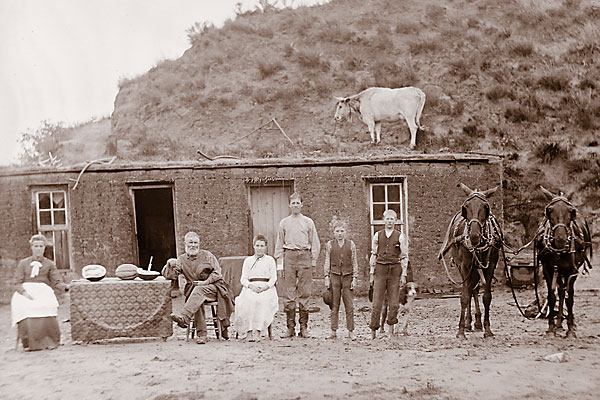 Dr. Harold Brown (my professor at Dartmouth Medical School in 1975) wrote a masterpiece titled Basic Clinical Parasitology.
Dr. Harold Brown (my professor at Dartmouth Medical School in 1975) wrote a masterpiece titled Basic Clinical Parasitology.
He lectured that if all of the feces in the world were blue and all of the urine yellow, it would explain why most of the world is green! You can see why we nicknamed this wonderful man “Stoolie Brown,” a name that he candidly adored.
By the time I finished his course, I was virtually incapacitated with the “self-diagnostic” fear that I was loaded, infested and infected with every parasite in the book! Even though Dr. Brown personally reassured me that I was only at risk for most of them, I still suffered many a worrisome hour, awaiting the results of lab studies that were, luckily, always negative.
Opportunistic parasites undoubtedly abounded in the Old West, just as they do today. Dr. Brown taught that parasites are “organisms that take up their abodes, temporarily or permanently, on or within other organisms for the purpose of procuring food …and shelter and [tend to derive] all the benefit from the association.” (Sounds like grown kids who won’t leave home!) Some better examples of parasites are various worms, lice, bedbugs and fleas.
Worm life cycles often require that adults, eggs or larvae live in soil or fecal material where they can be picked up through open sores on the bottoms of feet. Lice and fleas are insects that live in hair, especially on the head and in the genital region. They are the carriers of many diseases, including the killers typhus and plague. Bedbugs (back in the headlines lately) like to visit and bite after dark, causing allergies, itching and, sometimes, skin infections.
When people live close to the earth, often in poverty, like they did in the Old West, they will incur a very high risk of contracting these parasitic infections. Pioneers usually had inadequate access to water as well as a variety of the foods necessary to maintain a well balanced diet, adequate nutrition and optimum immune function.
From the 1850s through as late as 1910, pioneers commonly lived in a log, wooden or sod house with an earthen floor. Yards were littered with dung of all kinds. A privy dug close to the house was often too close to the well. Sometimes water was drawn from a nearby brook, downstream from the area where cattle grazed and defecated. Young children did not always have shoes, so they commonly walked around barefoot, especially in warm weather, exposing themselves to worm infestation. Without access to convenient clean water, a mother rarely had a chance to wash her child’s body, much less his feet.
Standards of hygiene were very different than they are today, when most people expect to bathe daily or at least a few times per week. Bed linens and clothing were not frequently or effectively cleaned in those days before the washing machine. Uncovered and soiled (often straw) mattresses were a haven for bedbugs or lice.
In his 1867 New Family Physician, Dr. Gunn recommended “purgatives and tonics” to treat three major types of childhood worms. Specifically, he recommended treatments ranging from castor oil followed by “Pink Root and Senna” or “Wormseed” mixed with molasses (round worms) to Spirits of Turpentine or pumpkin seeds (tapeworms). For pinworms, he recommended a rectal infusion of saltwater or aloe. One lice remedy, extolled by Dr. Gunn, was to apply “Fish Berries” fermented in whiskey.
Our modern standard of living and practice of hygiene has prevented us from what Dr. Brown often reminded me is the more “natural state of affairs,” namely, seeing parasites crawling on our skin or in our hair. More disturbingly, he lectured, imagine feeling their movement inside, just before they come out in our stool, through our skin or, yes, in some cases even emerging from the sclera of our eyes! Even after 35 years, I have no doubt that Dr. Brown’s parasitology course has left me with a case of PTSD!






